Shortly after moving to the area, we spent some time exploring the pretty village of Simiane-La-Rotonde, a few miles away from us in the neighbouring Department of Alpes de Haute Provence. Whilst we were there we noticed the names of 5 English Airmen had been added to the local War Memorial and set out to find out what had led them to being recognised alongside the names of local young men who had also perished in the War.

What we discovered was a story that highlighted the hard work of the Resistance in the area and a sad coincidence that clearly devastated the community and led to the young men being remembered so publicly.
During WW2 the area around us was a stronghold of the Resistance, with many memorials having been constructed to recognise the work that they did to fight against the Nazi occupation and also to remember those who lost their lives doing so – a previous blog details some of these read more here
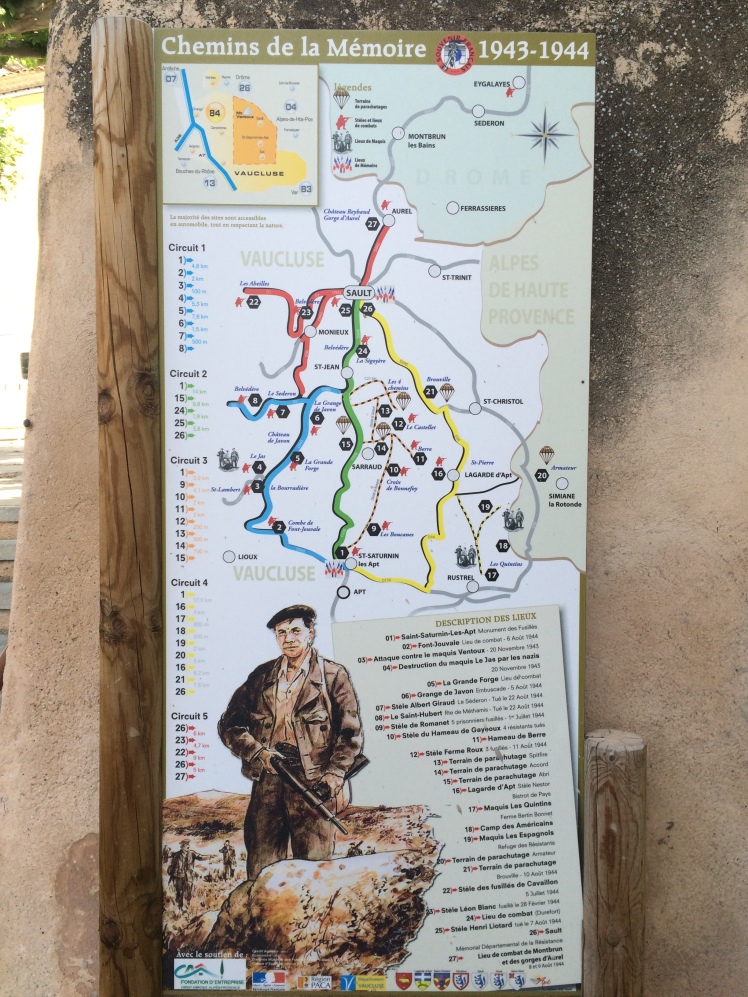
Many of the small villages had Resistance groups who knew the garrigue and surrounding rocky landscape like the back of their hands and Simiane-La Rotonde was such a village. Set on the front edge of the Albion Plateau the area between it and Mont Ventoux is sparsely inhabited and was a perfect location for them to carry out their work away from the prying eyes of the Occupying Forces.

Simiane was home to the Resistance Group known as ‘Abatteur’ (Slaughterman) and was made up of 7 men from the area, who came under the control of the Section for Landings & Parachutes, understandable considering the area they worked in.
The Section had been established by Charles De Gaulle and was responsible for securing the parachute drops of weapons and ammunition that had been organised in London. The head of this group went by the code name Captain Alexander….. he was in fact the renowned and celebrated surrealist poet René Char who, having been born in L’Isle sur la Sorgue, knew the area well.
On the night of 10th May 1944 the ‘Abatteur’ we’re preparing to receive a parachute drop of weapons from London, using a flat area of ground a short distance away from the hamlet of Chavon, in the hills between Simiane-la-Rotonde and Saint Christol as the drop zone.

They headed up to the field in the early hours of the morning and set themselves up, lighting small beacons, to await the drop, unaware of how fate would twist its knife that night.
On the same evening British bombers had flown from Italy to carry out an attack on Valence, where the Germans were building the V1 bombs that were devastating London. One of the Wellington bombers on the raid (LP180) was badly hit by anti-aircraft fire during the attack and turned back to Italy with severe damage. The pilot John Huggler (29 years old) sought out a suitable place to land the plane as it would not manage to return to its base.

As he passed over the Albion Plateau, he spotted the beacons lit below and believing it to be an emergency landing zone signalled by The Resistance, he turned the plane towards it, but flying low hit the valley just below the site & the plane burst into flames, killing all on board.
The ‘Abatteur’, waiting for the parachute drop rushed to the site of the crash to try to rescue the airmen, but were beaten back by the intense heat and ricocheting bullets that were exploding around them. They were helpless – there was nothing they could do to rescue the crew of the Bomber.
The following morning they returned to the site & recovered the bodies of the young men who had perished, burying them nearby, together with the larger pieces of the plane in an effort to hide the crash site from the Germans and to protect the integrity of the parachute drop zone.
Following the liberation of France the bodies of the young men were exhumed and moved to the Mazargues Military Cemetery at Marseille https://www.cwgc.org/find-a-cemetery/cemetery/35801/mazargues-war-cemetery,-marseilles/
and in 1945 a Memorial was placed at the site of the crash to remember what had passed on that tragic night.
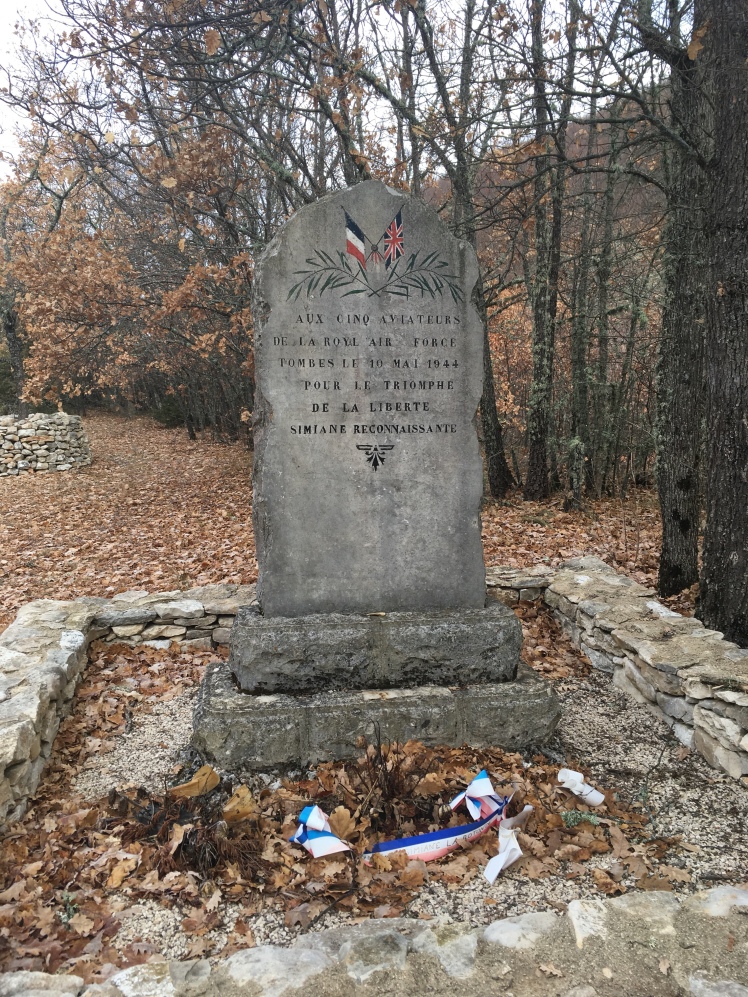
Today we took a walk to the site to pay our own respects to the men who had lost their lives that night & to remember the high-risk work done by the Resistance in the area during the war.
Driving into Chavon we drove through the hamlet & followed the small road that bears right in front of a house with a notice board on it’s front wall…..

Following the road down the hill we parked by the Lavoir, built at the side of the road and carried on walking from there…..

The road takes you along the valley, before climbing & reaching a cross roads, where we followed the track straight ahead, past a small track to the left signposted ‘Le Mazet’…..

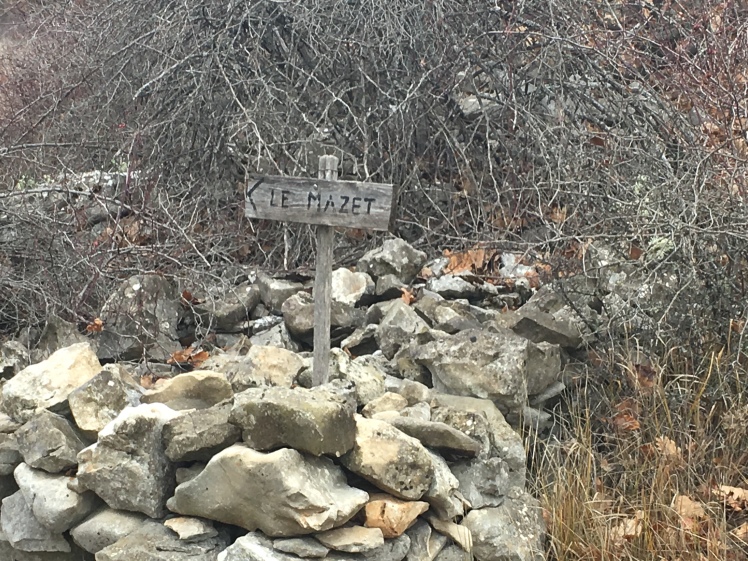
This track follows a route past lavender fields, before bearing right past the ‘drop zone’ used by the ‘Abatteur’ and marked with a sign in the hedge. You can see a little video from this spot here

Follow the track to the bottom of the field where there is a signpost for ‘L’Avion’ taking you to the left……

After a short distance there is another junction where there is another ‘L’Avion’ sign taking you down towards the valley…..
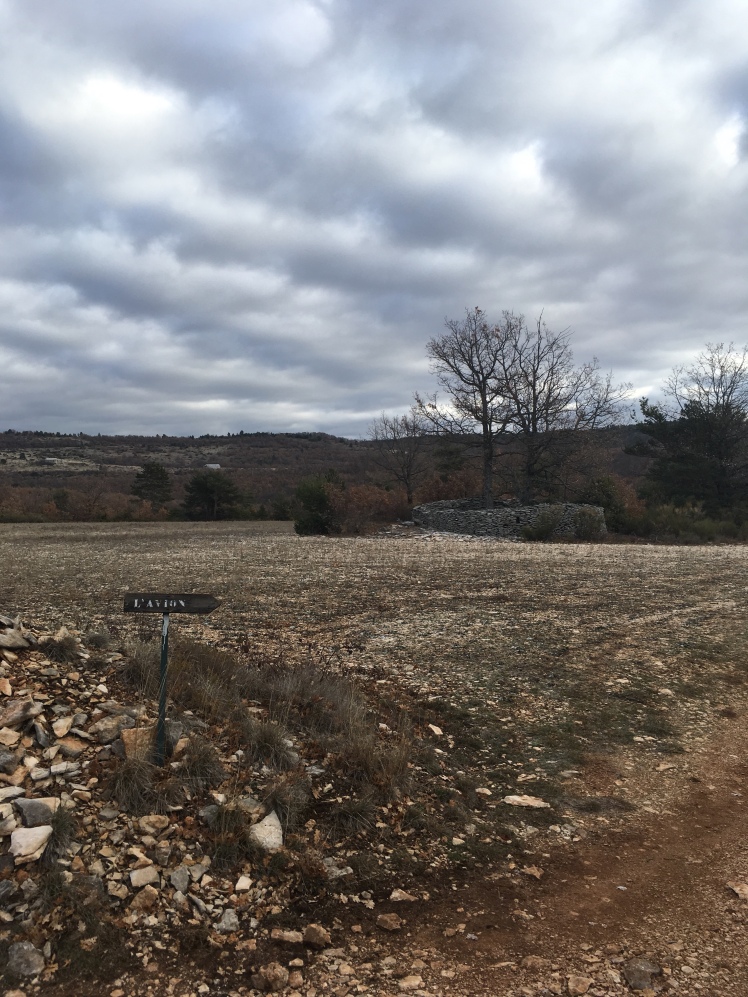
The well-made track drops gently down the side of the valley and signs keep you on the right route as you walk…..

After about half a mile you reach the head of the valley and the track brings you to the crash site and its memorial.
Built where the plane landed is a stone memorial to the 5 aircrew …..
But more poignantly there is a sculpture made from scraps of metal and cloth recovered from the crash site……

….. the tangled collection of twisted and melted metal is a shocking reminder of the damage caused during the impact that night……

On the ground around the sculpture are set 5 small stones, each bearing the name of one of the men who died, placed where their bodies were found in the wreckage……

It is a very peaceful site and an incredibly moving memorial to what took place that night.
The site is still littered with debris from the crash and it is nice to see that pieces that are found are being left on the stones that mark the young mens’ lives.
The site is off the beaten track, it’s not something that forms part of the Chemin de la Memoire, but it is certainly worth visiting.
You can see the route that we use with navigation on Komoot here
It is nice to see that the young men who died are recognised here and on the War Memorial at Simiane-la-Rotonde, but it is also good to visit to understand a little more about the work done by the Resistance across the region and the part they played in delivering the liberation of France.
I understand that following this tragic event René Char requested that the code words used by London change from ‘The Library is on fire’ as this evoked awful memories of what had happened.
I should finish by dedicating this to the 5 young men who died that night…..
John Huggler -29- Pilot
Harry Lane – 28 – Navigator
Walter Jackson – Bomber
Eric Howell – 22 – Rear Gunner
Neville Green – 21 – Radio Operator
And also the members of the ‘Abbateur’ who did everything they could to save them and subsequently continued their efforts to support the fight against the occupation.
…….Résister c’est éspérer …… To resist is to hope …….. René Char
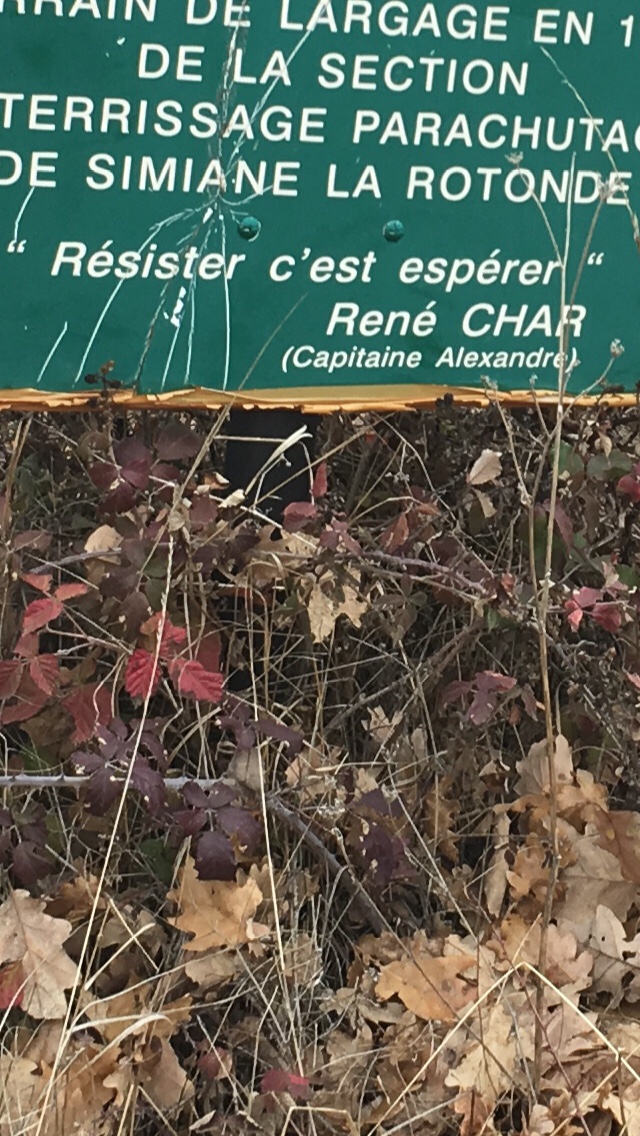
It is very moving to see all of the plaques to members of the Resistance (and others) that are all over France. In our small village of Mirabel aux Baronnies is a plaque to a young man who was shot against a wall of a building by the Germans on the same day I was born.
And there are many, many monuments all over southern France
LikeLiked by 1 person
Thanks – There are so many memorials around and it is nice to see that they are maintained & respected – the story of the young man where you live is particularly sad & when you look at the dates it’s such recent history & so sobering
LikeLike
I think you also see the impact of the wars, both WWI and WWII, very vividly in France as well as the UK through these plaques and memorials. It is sobering, as an American, to see that.
LikeLike
Very interesting, thank you. I hope my next book will feature the Resistance and whenever I read something like this, a little of it is absorbed for later.
LikeLiked by 1 person
Thanks – there’s so many hidden stories about the Resistance near us, so poignant!
LikeLike
A really terrific post, very poignant and well-illustrated. I will certainly follow the signs for Avion next time I am close to Simiane. Thank you!
LikeLiked by 1 person
Thanks – the area is riddled with poignant reminders of a terrible time, but this one is particularly thought provoking – well worth a visit (as is Simiane)
LikeLike
Wow that sculpture is quite something! It is so sad that there are sites and memorials like this all over France. We must never forget! #AllAboutFrance
LikeLiked by 1 person
Oh gosh and, as you say, what a moving story. A fitting memorial to 5 young men who died for our freedom. Over 70 years in it can sill bring a lump to my throat. #AAF
LikeLiked by 1 person
Me too – we’ve visited the memorial a couple of times now & it’s such a poignant site, I can’t even start to imagine the sheer horror of what took place that night #AllAboutFrance
LikeLike
Fascinating to see that parts of the plane still litter the area, somehow I can’t imagine that. The sculpture made of the bits is amazing. Thanks for sharing this moving and poignant story with #AllAboutFrance
LikeLiked by 1 person
Thanks it is incredible that pieces are still lying around. We visited again a few days ago and a few more pieces had been placed on the memorial – what’s so nice is that people leave them there rather than take them away from the site #AllAboutFrance
LikeLike